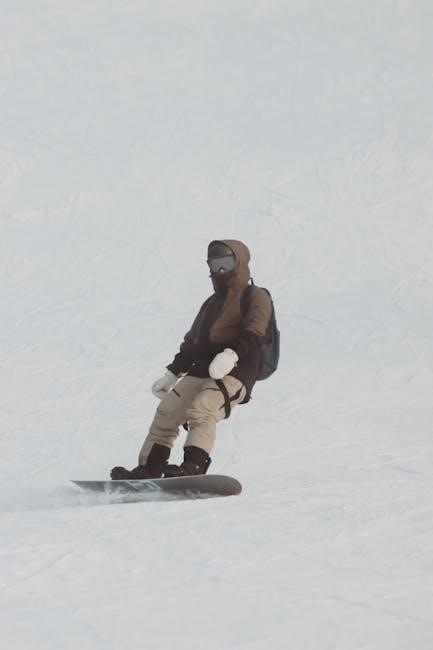
Finding the right snowboard size starts with understanding how your height relates to board length. A common starting point suggests the board should reach somewhere between your chin and nose. However, this is just a general guideline. Factors like weight, riding style, and skill level play a significant role in determining the ideal snowboard length for you.

Selecting the right snowboard size is crucial for a comfortable and effective riding experience. It’s not merely about matching your height to a board length; it’s a holistic approach considering various factors. While height is a starting point, weight plays a more critical role in determining the appropriate snowboard size. Think of height as a preliminary filter, and weight as the primary determinant.
Beyond height and weight, your riding style significantly influences the ideal board size. Are you a freestyle enthusiast, a freeride adventurer, or a park rider? Each style demands a different board length for optimal performance. Skill level also matters. Beginners might prefer shorter boards for easier control, while advanced riders often opt for longer boards for stability at higher speeds.
Furthermore, consider your boot size. Larger boots require a wider board to prevent toe or heel drag. Women’s snowboards are specifically designed to cater to their unique body mechanics and smaller feet. Lastly, remember that sizing charts are guidelines. Don’t hesitate to seek expert advice and try out different boards to find the perfect fit.
The Importance of Weight in Snowboard Sizing
While height offers a preliminary reference, weight is arguably the most critical factor in determining the correct snowboard size. Snowboard flex, which dictates how easily the board bends and responds, is directly related to a rider’s weight. A board that’s too stiff for your weight will be difficult to control and turn, while a board that’s too soft will feel unstable and wash out at higher speeds.
Manufacturers design snowboards with specific weight ranges in mind. Exceeding the recommended weight range will cause the board to flex excessively, hindering performance and control. Conversely, if your weight falls below the recommended range, you won’t be able to effectively engage the board’s edges for carving and turning.
Therefore, consulting a snowboard sizing chart that prioritizes weight is essential. These charts provide a range of board lengths suitable for your weight, allowing you to then fine-tune your selection based on other factors like riding style and terrain. Always prioritize weight over height when making your initial size assessment. Remember, the right flex is key to unlocking optimal performance and enjoying your time on the slopes.

General Snowboard Size Chart (Height vs. Length)
A general snowboard size chart serves as a helpful starting point when determining the appropriate board length. These charts typically correlate a rider’s height with a range of recommended snowboard lengths. While not a definitive solution, they provide a good initial estimate.
It’s crucial to remember that these charts are simply guidelines. They often assume an average weight for a given height. Therefore, it’s essential to consider your weight in conjunction with the chart’s recommendations. If you fall outside the average weight range for your height, you may need to adjust the suggested board length accordingly.
For instance, if you are taller than average but lighter than average, you might opt for a shorter board within the recommended range. Conversely, if you are shorter than average but heavier than average, a longer board might be more suitable. Always use the chart as a foundation and then fine-tune your selection based on your individual characteristics and riding preferences. Refer to specific manufacturer charts when possible, as sizing may vary slightly between brands.
Considering Riding Style and Terrain
Beyond height and weight, your preferred riding style and the type of terrain you frequent significantly impact the ideal snowboard size. Different snowboarding disciplines demand specific board characteristics to optimize performance. Freeride boards, designed for carving and navigating varied terrain, typically benefit from a longer length. The added length provides greater stability at higher speeds and enhanced floatation in powder.
Conversely, freestyle riders who spend their time in terrain parks or performing tricks often prefer shorter boards. Shorter boards are more maneuverable and easier to rotate, facilitating tricks and jibbing. All-mountain boards, intended for a mix of riding styles and terrain, fall somewhere in between.
If you primarily ride groomed runs and enjoy carving, a slightly longer board within the recommended range may be ideal. If you spend most of your time in the park hitting jumps and rails, a shorter board will offer greater control. Consider how you spend the majority of your time on the mountain when making your decision. The more specialized your riding style, the more precisely you can tailor your board size to your needs.
Snowboard Size for Beginners
Choosing the right snowboard size is particularly crucial for beginners as it directly impacts the learning curve and overall experience. A board that is too long or stiff can be difficult to control, leading to frustration and hindering progress. Conversely, a board that is too short may lack stability and make it harder to maintain balance.
For beginners, it’s generally recommended to opt for a slightly shorter board within the suggested size range based on weight and height. This allows for easier turning and maneuverability, making it easier to learn the fundamentals of snowboarding. A softer flex is also beneficial, as it provides more forgiveness and allows for smoother transitions.
When starting, prioritize control and ease of use over high-speed performance. A shorter, softer board will make it easier to link turns, maintain balance, and develop confidence on the slopes. As your skills progress, you can then consider moving to a longer or stiffer board to enhance performance and stability at higher speeds. Don’t hesitate to seek advice from experienced snowboarders or shop staff.
Snowboard Size for Freeride vs. Freestyle
The type of snowboarding you intend to do significantly influences the ideal board size. Freeride and freestyle riding styles demand different board characteristics to optimize performance. For freeride, which involves riding primarily on ungroomed terrain, powder, and challenging slopes, a longer snowboard is generally preferred;
Longer boards offer increased stability at higher speeds, better floatation in deep snow, and enhanced edge hold on steep terrain; This allows riders to confidently navigate varied conditions and maintain control while carving down the mountain. A stiffer flex is also common in freeride boards, providing greater responsiveness and power transfer.
In contrast, freestyle snowboarding, which focuses on tricks, jumps, and riding in terrain parks, typically calls for a shorter snowboard. Shorter boards are more maneuverable and easier to spin, making them ideal for performing tricks and navigating tight spaces. They also tend to have a softer flex, offering more forgiveness and a playful feel. Freestyle riders prioritize agility and control over high-speed stability.
Boot Size and Snowboard Width Considerations
While snowboard length is a primary factor in selecting the right board, boot size and snowboard width are equally important considerations for optimal performance and comfort. The width of a snowboard at its waist (the narrowest point between the bindings) must be compatible with your boot size to prevent toe or heel drag.
If your boots overhang the edges of the board excessively, you risk catching your toes or heels in the snow during turns, leading to falls. Conversely, if the board is too wide for your boots, you may struggle to engage the edges effectively, reducing control and responsiveness. Generally, riders with larger boot sizes (US men’s 11 or larger) should consider a wider snowboard.
Manufacturers often indicate whether a board is “standard,” “mid-wide,” or “wide” in its specifications. Comparing your boot size to the board’s waist width is crucial. If you’re unsure, consult a snowboard expert who can assess your boot-board compatibility. Remember that proper boot fit within your bindings is also vital before considering snowboard width, as heel lift can exacerbate toe drag issues. Selecting the right snowboard width ensures comfortable, efficient, and safe riding.

Women’s Specific Snowboard Sizing
Women’s snowboards are designed to cater to the unique biomechanics and preferences of female riders. Recognizing that women often have a lower center of gravity, smaller feet, and different muscle mass compared to men, manufacturers have developed boards specifically tailored for women. These snowboards typically feature narrower widths, softer flex patterns, and adjusted sidecuts to enhance control and maneuverability.
When selecting a women’s snowboard, consider your weight, height, and riding style, just as you would with any board. However, pay close attention to the board’s flex. A softer flex is generally more forgiving and easier to control, making it ideal for beginners or riders who prefer a playful, freestyle-oriented style. Intermediate and advanced female riders may opt for a slightly stiffer flex for increased stability at higher speeds and improved carving performance.
The size charts provided by manufacturers are valuable resources. They usually account for the differences in women’s body types. Remember to factor in your boot size to ensure compatibility with the board’s width. Ultimately, choosing a women’s-specific snowboard that matches your skill level and riding style will lead to a more comfortable and enjoyable experience on the slopes.
Youth Snowboard Sizing Guide
Selecting the right snowboard size for young riders is crucial for their safety, comfort, and progression. A board that is too long or stiff can be difficult to control, hindering their learning experience and potentially leading to frustration. Conversely, a board that is too short may lack stability and make it challenging to maintain balance.
When sizing a youth snowboard, weight is the primary factor to consider. Most manufacturers provide size charts that correlate a child’s weight to the appropriate board length. As a general guideline, the snowboard should typically reach somewhere between the child’s chest and chin when stood on its end. However, it is important to consult the specific size chart provided by the board manufacturer for the most accurate recommendation.
Height can also be used as a secondary reference point, but weight should always take precedence. Skill level is another important factor to consider. Beginners may benefit from a slightly shorter board, as it will be easier to turn and control. More experienced young riders may prefer a slightly longer board for increased stability at higher speeds. When in doubt, it’s best to err on the side of a shorter board, especially for beginners.
Other Factors Affecting Snowboard Size (Skill Level)
While height and weight are fundamental in determining snowboard size, a rider’s skill level significantly influences the ideal board length. Beginner snowboarders often benefit from a shorter board. Shorter boards are easier to control, turn, and maneuver, making them more forgiving and less likely to catch an edge. This allows beginners to focus on developing fundamental skills like balance and basic turns without being overwhelmed by a larger, more demanding board.
Intermediate riders who have mastered the basics can typically transition to a slightly longer board. A longer board provides greater stability at higher speeds and enhances edge hold, allowing riders to carve more confidently and explore more challenging terrain. As riders progress and gain experience, they can further fine-tune their board size based on their preferred riding style and the type of terrain they frequent.
Advanced snowboarders often have a quiver of boards to suit different conditions and riding styles. They may choose a longer board for freeriding in deep powder or tackling steep, technical terrain, while opting for a shorter, more agile board for freestyle riding in the park or pipe. Ultimately, skill level is a crucial factor in determining the optimal snowboard size, and riders should adjust their board length as they progress and refine their riding style.
